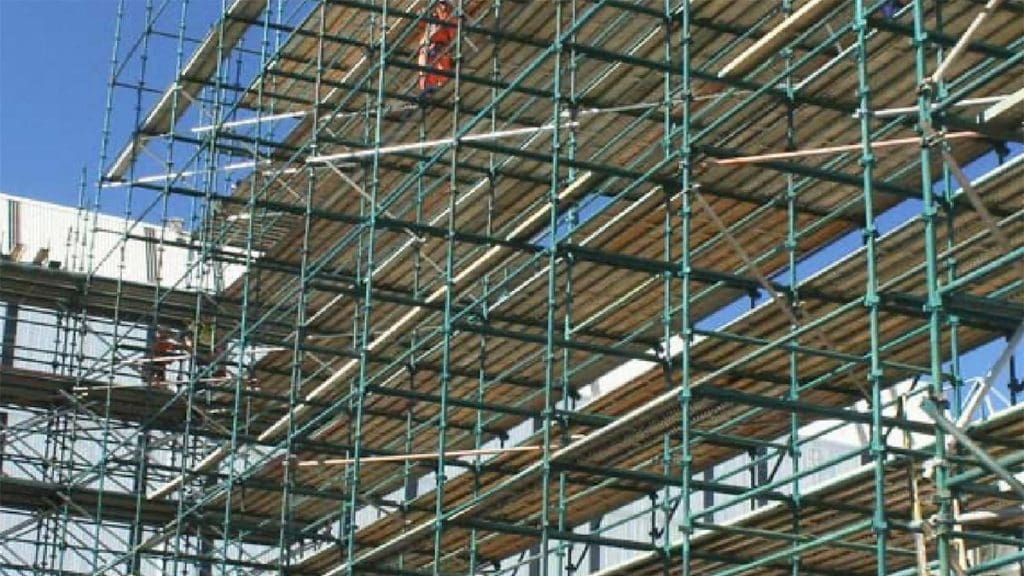Affordable Domestic Scaffolding for Every Home Renovation Project
Affordable Domestic Scaffolding for Every Home Renovation Project
Blog Article
Exploring the Different Kinds Of Scaffolding Made Use Of in Construction Tasks
The construction market relies greatly on numerous types of scaffolding to fulfill particular task requirements, each offering distinct benefits and applications. Conventional structure scaffolding offers a strong foundation for basic tasks, while put on hold scaffolding is essential for job on high-rise structures.

Typical Frame Scaffolding
Conventional frame scaffolding is just one of the most extensively made use of techniques in the construction market due to its robustness and flexibility. This system includes vertical and horizontal frameworks that are constructed to create a secure platform for products and workers. The main parts consist of upright blog posts, straight journals, and diagonal dental braces, which with each other provide a strong framework that can support significant tons.
One of the essential benefits of standard structure scaffolding is its adaptability to numerous building and construction projects, ranging from domestic buildings to big commercial structures. The modular style enables very easy setting up and disassembly, making it effective for both temporary and long-term projects. Furthermore, the system can be tailored in height and size, suiting different structure styles and site problems.
Safety is vital in scaffolding applications, and traditional structure systems are outfitted with guardrails and toe boards to stop falls and guarantee employee defense. Additionally, regular examinations and adherence to safety and security regulations are crucial in maintaining the stability of the scaffold. In general, conventional structure scaffolding stays a fundamental selection in the building industry, offering a dependable system for labor and enhancing overall task effectiveness

Suspended Scaffolding
Put on hold scaffolding provides an unique solution for building and construction jobs that require accessibility to elevated surface areas, especially in circumstances where conventional framework scaffolding may be impractical. This kind of scaffolding is commonly suspended from the roofing or top degrees of a framework, using a system of wheels, ropes, and platforms to develop a functioning space that can be adapted to different elevations.
Among the primary advantages of put on hold scaffolding is its adaptability. It can be quickly repositioned or decreased to suit modifications in building and construction requirements, making it suitable for tasks such as home window installation, frontage job, and maintenance on skyscrapers. Additionally, the marginal impact of put on hold scaffolding permits far better use ground area in urban atmospheres, where room is often restricted.
Safety is a critical factor to consider in the use of put on hold scaffolding. Overall, suspended scaffolding supplies a reliable and reliable solution for accessing hard-to-reach locations in numerous construction situations, enhancing both performance and security on website.
System Scaffolding
System scaffolding, often concerned as a modern remedy in the scaffolding market, includes pre-engineered elements that can be swiftly assembled and adapted for numerous building and construction jobs. Scaffolding. This sort of scaffolding is identified by its modular style, which permits convenience and effectiveness on job sites, suiting various elevations and architectural demands
Typically made from high-strength steel or aluminum, system scaffolding offers improved durability and stability. The elements include vertical blog posts, horizontal ledgers, and angled dental braces, which interconnect firmly, scaffold yards near me guaranteeing a robust structure. The style commonly incorporates standardized fittings, simplifying setting up and disassembly processes, therefore lowering labor time and costs.

Rolling Scaffolding
Rolling scaffolding is a functional option to conventional fixed scaffolding, developed for movement and simplicity of use on construction websites. This sort of scaffolding contains a platform supported by frameworks with wheels, enabling employees to conveniently transfer it as required. The flexibility function considerably boosts productivity, as it decreases downtime related to dismantling and setting up dealt with scaffolding.
Usually created from lightweight materials such as light weight aluminum or steel, rolling scaffolding uses a tough yet mobile option for projects calling for frequent repositioning - Scaffolding. It is especially advantageous in jobs such as painting, drywall installment, and electrical job, where access to numerous elevations and places is essential
Security is critical in rolling scaffolding layout, with attributes such as locking wheels to stop unintentional movement when in operation, and guardrails to secure workers from falls. Furthermore, numerous versions are flexible in height, accommodating various project demands.
Cantilever Scaffolding

The design of cantilever scaffolding commonly includes using brackets or arms anchored to a building or framework, allowing the platform to prolong external securely. Safety and security is vital; thus, these scaffolds need to be engineered to hold up against environmental conditions and numerous tons. Normal evaluation and maintenance are necessary to guarantee architectural honesty and employee safety.
Cantilever scaffolding is favored for its versatility and reliable use area, making it a preferred choice in urban settings where space constraints are typical. It promotes easier accessibility to high elevations, ultimately adding to the general performance of construction jobs. As with all scaffolding kinds, appropriate training and adherence to safety and security criteria are critical for workers utilizing cantilever scaffolding.
Conclusion
In final thought, the diverse kinds of scaffolding made use of in construction tasks each offer distinct objectives tailored to certain site needs. Typical framework scaffolding provides stability, while suspended scaffolding offers versatility for elevated jobs. System scaffolding promotes fast setting up, and rolling scaffolding boosts flexibility for differing workplace. Cantilever scaffolding effectively addresses challenges in metropolitan settings. Comprehending these scaffolding kinds is important for maximizing safety and productivity in building, inevitably adding to the successful completion of jobs.
Typical framework scaffolding gives a tough structure for general jobs, while put on hold scaffolding is necessary for work on high-rise frameworks.Rolling scaffolding is a versatile choice to standard fixed scaffolding, made for movement and convenience of usage on building websites. As with all scaffolding kinds, correct training and adherence to security criteria are crucial useful content for employees using cantilever scaffolding.
Traditional framework scaffolding gives stability, while suspended scaffolding provides adaptability for scaffold services elevated jobs. System scaffolding promotes quick assembly, and rolling scaffolding enhances flexibility for differing job atmospheres.
Report this page